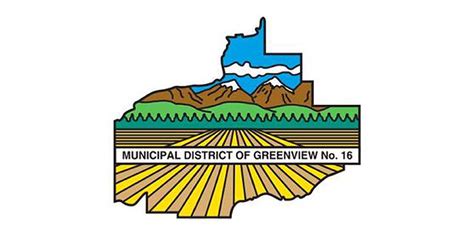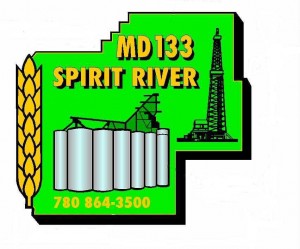Municipal Funding Partners
City of Grande Praire

The City of Grande Prairie is a founding member of South Peace Regional Archives. The townsite was founded by the Argonaut Company in 1910, incorporated in 1914, became a town in 1919, and a city in 1958.
The name “grande prairie” appears on the earliest geological survey maps of this region to describe, not a city, but the largest area of open prairie in the Peace River Country. Formerly called Buffalo Plains because of the vast herds of buffalo which ranged there along with large herds of elk, “la grande prairie” was criss-crossed by the trails of the Beaver, Cree and Iroquois Indians as they traveled and traded from Jasper and Sturgeon Lake to nearby Flyingshot and Saskatoon Lakes, and on to Spirit River and Dunvegan further north. These routes were followed by explorers, fur traders and missionaries as they made contact with the native groups.
As early as 1872, other groups such as Canadian Pacific Railway engineers and Geological Survey men visited the grande prairie, reporting on the great agricultural potential and rich resources of timber, coal, oil and gas. At the turn of the century, the rush to the Klondike brought more than 700 prospectors through the area, and the conflict over land rights began. The Royal North West Mounted Police were dispatched north, and Treaty No. 8 was pushed through as quickly as possible. This cleared the way for the Dominion Land surveyors and settlement, and a trickle of hardy souls undertook the months-long hike through the muskeg and bush over the Long Trail into the “Last Best West.”
Like many northern communities, Grande Prairie germinated because it was surrounded by rich resources, but unlike others it was not a one industry town. By 1905, when the future site of the city was occupied only by three bachelor shacks, Louis Callihou was already experimenting with agricultural crops. In 1906, Harry Clifford, the first man to bring his non-native wife into this region, came looking for oil and gas. In 1907, S.H. Tuck came to explore the timber possibilities in the region.
By 1908, land on the site of the future city had been surveyed and staked out for the proposed railway. Nearby, blacksmith George L. Breeden operated a dirt-floored, sod-roofed cabin as the “Breeden Hotel” for travelers coming to check out the area.
In Edmonton, W.A. Rae carefully examined all the reports, realized the potential for a town, and persuaded a group of businessmen to form the Argonaut Co. In 1909, they purchased 80 acres beside the proposed railway from bachelor Joe Germain, registered it at the land office in Grouard, and hired a surveyor to divide it into lots. This “town” was promoted with great excitement as “Grande Prairie City.”
Within two years, the nucleus of a community had formed around a post office, store, bank, livery barn, two churches, Royal North West Mounted Police barracks, and the Dominion Land Survey Office. A stage coach ran from the end of steel in Edson to Grande Prairie, but the passengers had to walk and push as often as they rode.
By 1913, a school and a hospital had been built, as well as Tissington’s Empire Hotel, the Selkirk Trading Company and the Hudson’s Bay Store in the downtown core. That same year saw the first representative from the community sent to the Provincial Legislature and the first issue of the Grande Prairie Herald.
When the hamlet became a village in 1914, it already had a baseball league and hockey teams and boasted a social life including hay rides and dances, a picture show, musical entertainment and theater productions.
Electricity arrived in 1915, courtesy of the Grande Prairie Power Plant. However, the town was yet without a railroad, and everything had to come in over the Edson or Long Trail. Items such as the 2 1/2 ton bank safe, an entire printing press, and equipment for lumber and flour mills were only occasional problems, but the Selkirk Trading Company promised “fresh groceries arriving every month over the Edson Trail.”
Finally, in 1916, the railway reached Grande Prairie, providing transportation to market for agricultural products and opening the floodgates for settlement. Growth slowed for a few years during WWI, when the area lost many of its British-born bachelors to the war effort, but tripled in one year after the war was over. By then, many of the amenities of a modern community were available: drug store, jeweler, cigar store, bakery, hardware stores and a barber shop. In 1919 the population reached 1000, sufficient to apply for town status.
During the decade of the twenties, the original investors began to see some financial return on their investments. Local farmers won world championships in both wheat and oats at the Chicago World Fair, proving the area’s agricultural potential. Richmond Avenue was extended around the corner into “Carriage Lane”, running along the ridge of Bear Creek (now 102 Street), and fine residences were built overlooking the creek valley. AGT introduced a long distance telephone service and Northern Aviation built an aerodrome and landing strip west of the town, providing freight and passenger services in the Peace Country. Comfort and convenience had increased dramatically in less than 20 years, and continued with the addition of the Library and CFGP radio in the next decade.
Although far removed from the material devastation of W.W. II, Grande Prairie saw plenty of war action. Its airport was a key link on the American air route to Alaska and Russia, and as many as 500 Canadian and American Air Force personnel were stationed there. In the decade after the war, Grande Prairie experienced a modernizing boom, as did many other Canadian communities. The town was introduced to local natural gas for heating, door to door mail, traffic lights, dial telephones, and television. Construction boomed and people flowed in.
On a February day in 1958, many of these people lined Clairmont Road to cheer as Henry McCullough rode into town on his horse Diamond. In minus fourty temperatures, he had followed the grueling trail of early pioneers from Edmonton to Grande Prairie. With him he carried the City Charter, presented to him by the premier on the steps of the Alberta Legislature. Finally it could truly be called “Grande Prairie City”.
Now, national and international companies like Northern Canadian Forest Products (1961) and Proctor & Gamble (1973) came, resulting in local forest products being sent as far afield as Japan. In the 1980s, development of the Elmworth Gas Field, one of the largest natural gas fields in North America, brought international expertise and involvement. The decade of the 90s saw further development of the retail business sector until it was of a size to service the entire Peace River Region of Alberta and British Columbia.
When A.M. Bezanson toured the region in 1906, there were few agricultural settlers. While he was convinced of the potential of this area enough to promise success for “those who desire to leave the well-beaten path and lead the invasion into this practically unknown, but most highly favoured, part of the Last West,” he could not have envisioned the city which is now the hub of the Peace River Country.
View our Flickr album of historical photos of Grande Prairie.
County of Grande Prairie

The County of Grande Prairie is a founding member of South Peace Regional Archives. The County was formed in 1951. Pre-existing organizations were M.D. of Bear Lake and M.D. of Grande Prairie. It is also responsible for the hamlet of Clairmont, which lost its village status in 1949.
The County of Grande Prairie is located in the northwestern part of the province of Alberta. Its boundaries are the Saddle Hills to the north, the Wapiti River on the south, the British Columbia border on the west and the Smoky River on the east. When it was formed in 1951, it was the first and largest County in the Province of Alberta. Within the boundaries of the County are the hamlets of Clairmont, LaGlace and Valhalla, the towns of Sexsmith, Hythe and Beaverlodge and the City of Grande Prairie.
At the time of first European contact in this area, the land was held by the Beaver and Cree First Nations, but artifacts from an archeological site on Saskatoon Mountain suggest frequent human habitation dating back as far as 9400 to 7500 BP. When the land was put to the plow, many stone tools were discovered and added to personal and museum collections.
Within recorded history, the First Nations groups who occupied the area have lived in small family groups, meeting in larger groups during the summer for celebrations, singing and dancing. In the 1800s, their leaders were chiefs like LaGlace and Pouce Coupe, names given by French traders who could not pronounce their Beaver names. In 1899, after incursions by fur traders, missionaries and Klondike gold seekers, they accepted Treaty No. 8 and gave up their land in exchange for reservations at Dunvegan, Horse Lake and Sturgeon Lake.
Soon after the turn of the century, settlers began to squat on the un-surveyed land. The first surveyed community in the County was the Metis Settlement of Flying Shot Lake in 1907, surveyed in the French method of long lake lots with frontage on the water and access to the prairie for animal feed. This group had arrived from Lac St. Anne in the late 1800s.
In 1909, Dominion Land Surveyors began to pound in survey stakes, and serious settlement began. The Homestead Act offered a quarter section of land for $10.00. That year, the Bull Outfit, a group of settlers from Ontario came over the Long Trail, along with other settlers. In 1911 the Edson Trail was opened up as a shorter way to get into the south Peace and a wave of settlement began. By the time the railway reached the area in 1916, the good land had already been taken up.
In 1912, two Municipal Districts were formed: the M.D. of Grande Prairie No. 739 extending westfrom the Smoky River through range 5 and north from the Wapiti River through township 73; and the M.D. of Bear Lake No. 749, 18 miles square, over townships 71, 72, and 73 in ranges 6, 7, and 8, West of the 6th. In 1944, the two were combined and territory added to create the M.D. of Grande Prairie No. 127.
Soon after its inception, the Municipal District “approached the Department of Municipal Affairs suggesting that a form of the County system be tried.” (County of Grande Prairie No. 1 50th Anniversary Special Edition, Daily Herald Tribune) The Counry Act became law on July 1, 1950 and the County of Grande Prairie No. 1 was incorporated on January 1, 1951, the first and largest county in the province of Alberta.
Municipal District of Greenview

The Municipal District of Greenview is a founding member of South Peace Regional Archives. It was formed in 1994. Pre-existing organizations were Improvement Districts 110, 111, 126, and 16.
The Municipal District of Greenview in north-western Alberta covers 33,275 square kilometers of land or 8.4 million acres. It is bounded by the British Columbia border on the west, the Smoky and Little Smoky Rivers in the north, the Counties of Woodlands and Yellowhead on the south, and the M.D. of Big Lakes to the east.
Existing in this area before the creation of the M.D. of Greenview were Improvement Districts 110, 111 and 126. These I.D.s were combined in 1968 to form I.D. No. 16. As an Improvement District, the jurisdiction was administered from High Prairie under the auspices of the Department of Municipal Affairs, with input from a local Advisory Council. In January 1994, I.D. No. 16 became the M.D. of Greenview No. 16, fully self-governed by councilors from eight electoral divisions: Grande Cache, Little Smoky, Valleyview, Sunset House, New Fish Creek, DeBolt, Crooked Creek and Grovedale.
The first municipal office opened in 1966 on Main Street Valleyview, then moved to the Provincial Building there in 1979. In 1990 the M.D. moved into their new office complex on 50th Street.
The major industries in the district are resource extraction, with extensive deposits of oil, gas and coal in the forested hills which are also logged for lumber. Approximately one quarter of the land is suitable for Agricultural activities such as grain production, livestock and ranching. Tourism is a rapid-growth industry in the areas natural setting of lakes, rivers and forests, supplemented by developed recreational facilities.
Within the boundaries of the M.D. of Greenview are the Towns of Fox Creek, Grande Cache and Valleyview, and the Sturgeon Lake Indian Band. There are also ten Hamlets which fall under the jurisdiction of the M.D.: DeBolt , Goodwin, Grovedale, Landry Heights, Little Smoky, New Fish Creek, Puskwaskau, Ridgevalley, Sunset House and Sweathouse.
Municipal District of Spirit River

The Municipal District of Spirit River is a contributing member of South Peace Regional Archives. The M.D. was incorporated in December 1916 as the Rural Municipality of Spirit River No. 829. The Municipal District of Spirit River No. 829 was renumbered by Ministerial Order as of April 1, 1945, becoming the Municipal District of Spirit River No. 133. Pre-existing organizations were Territorial Unit 829 and Large Local Improvement District No. 829.
The Municipal District of Spirit River was incorporated on November 8, 1916 by a provincial Ministerial Order (effective December 11, 1916) as the Rural Municipality of Spirit River No. 829. The name “Spirit River” comes from the Cree “Chepe Sepe” meaning “Ghost River.” The Municipality included Twp. 77 Ranges 5 and 6, Twp. 78 Ranges 4, 5, and 6, and Twp. 79 Range 4, in Range 5 those parts south and east of Rat Creek, and the south half of Twp. 79 in Range 6, all W 6th. Less than a year after its incorporation, on May 15, 1917, the M.D.’s boundaries were expanded to include the part of Twp. 79 Ranges 5 and 6 between Rat Creek and the Kistuan River. Sometime before 1928, the municipality became known as a “Municipal District” rather than a “Rural Municipality.” The Municipal District of Spirit River No. 829 was renumbered by Ministerial Order as of April 1, 1945, becoming the Municipal District of Spirit River No. 133.
As of 2009, Spirit River includes 68,588 hectares of land and is bounded by Peace River to the north, Saddle Hills County to the south and west, and Birch Hills County to the east. The M.D. of Spirit River includes farmland and unincorporated communities like hamlets. Although the Town of Spirit River and Village of Rycroft are within the M.D.’s borders, the M.D. is not responsible for their administration since they are considered independent urban municipalities. The local economy is founded on agriculture and related businesses. As of 1998, about 84% of land in the M.D. was agriculturally developed or improved. Other natural resources and related activities include oil and gas, lumber, gravel, hunting, and fishing.
The Municipal District of Spirit River operates under the provincial Municipal Government Act. The M.D. is required “to provide good government”, “develop [a] safe and viable” community, and “provide [local] services, facilities or other things that, in the opinion of council, are necessary or desirable for all or a part of the municipality” (Alberta Municipal Affairs website).
The M.D. is governed by a four person council, each representing a Division. The council is responsible creating and reviewing policies and programs on behalf of the municipality and can “exercise the powers of the municipal corporation” through bylaws and resolutions (Alberta Municipal Affairs website). Council elections are held every three years. The M.D.’s chief elected official is the Reeve, who is appointed by the councilors from among their number. The M.D. also has an unelected Chief Administrative Officer responsible for overseeing the actual implementation and administration of the municipality’s policies and programs
The settlement history of the Spirit River area extends to long before the M.D. was established in 1916. During the 1800s, both North West Company and HBC had trading posts at nearby Dunvegan, across the Peace River from where Spirit River is now located. In the 1860s, Dunvegan also became the site of a Roman Catholic Mission. By the late 1800s, both farming and ranching were being done in the Spirit River area. In 1906, an Anglican mission was founded. The Spirit River area was surveyed for the Government of Canada in 1909 by J. B. Saint Cyr. Early settlers arrived primarily over the Long Trail and the Edson Trail. After the arrival of the Edmonton, Dunvegan and British Columbia Railway (E. D. & B. C.) at Spirit River in 1916, settlement increased.
Before becoming a Rural Municipality, the area now composing Spirit River was part of Large Local Improvement District No. 829 and before December 18, 1913, Territorial Unit 829. The parts of Large Local Improvement District 829 not included in the M.D. were transferred to LIDs 800 and 830.
The first meeting of the Rural Municipality of Spirit River was held January 2, 1917 at the Spirit River Hotel (located at the Spirit River Station). The council was initially composed of five members, although the number of councilors was reduced to four in 1934. The first councillors were W. S. O. English, A. H. Parks, S. Mageau, J. A. Bell, and G. Galvin and the first Secretary-Treasurer was R. H. Rycroft. Mr. Rycroft’s home functioned as the municipality’s office until an office building was rented in 1918. The M.D. later bought an office building, which burned down in 1922. A new office was constructed after the fire and served until 1960 when the old Prestville School was moved to Spirit River and became the new municipal district office. In November 1983 another new M.D. office was opened, followed by a new Public Work Shop in January 1984.
The M.D. has had a fairly stable population base over the years, 850 people in 1921, 812 in 1991, although the numbers have been dropping in recent years. As of 2009, the population stood at 662. By cooperating with other municipalities in the area, Spirit River is able to offer its residents a number of services while still retaining the municipality’s autonomy.
The M.D.’s first by-law was a Herd By-Law passed March 1, 1917. The By-Law aimed to stop livestock roaming free through municipality. In 1918, a weed inspector and police officer were hired. By issuing debentures, the M.D. was able to finance necessary road building in the municipality, meeting expenses for equipment and labour.
Over the years, the M.D. has been involved in providing various forms of assistance to its residents. For example, the M.D. helped with hospital and medical expenses during 1918 flu epidemic, provided seed grain advances to farmers during tough years, and made relief payments to many of its residents during the 1930s Depression. In fact, relief payments were biggest expenditure of the MD through the 1930s with all other expenses kept as low as possible.
By 1989, the M.D. was engaged in a number of activities, running an agricultural service board and a fire department and participating in the South Peace Regional Planning Commission, the Central Peace General Hospital Board, the Central Peace Seed Cleaning Association, the Municipal District Library Board, the Grande Spirit Foundation, the Agricultural Development Corporation, the Tourism Action Committee, and the Spirit River and Rycroft Recreation Boards.
1994 cutbacks in the Provincial Government and an amended Municipal Government Act caused the M.D. to assume control of its own planning and assessment services. Assessment services and some planning were contracted out, while minor planning was done by the M.D. itself.
As of 2009, services provided by and functions carried out by the M.D. include: the Agricultural Services Board, Development Department, Family and Community Support Services (as a partnership between Province of Alberta, Alberta municipalities, and Metis Settlements), Emergency Services (volunteer fire department, member of the Central Peace Region – Emergency Management Agency, RCMP detachment at Spirit River), Public Works, Waste Management, and Taxation.
The M.D. also participates in the Agricultural Service Board, Central Peace Health Council, Central Peace Medical Clinic Board, Central Peace Seed Coop, Disaster Services Committee, Family and Community Support Services, Grande Spirit Foundation, Inter-Municipal Relations Committee, Land Use Planning Steering Committee, M.D. Fire Department, Mighty Peace Tourist Association, Mountain Pine Beetle Project, Municipal Planning Commission, Peace Library System Board, Peace Region Economic Development Alliance, Personnel Committee, Senior Housing Projects, South Peace Regional Archives, South Peace Water Project, Subdivision & Development Appeals Board, and VSI Services Committee.
Other Funding Partners
Government of Alberta

Government of Canada

Library and Archives Canada

Saddle Hills County

Saddle Hills County was incorporated on July 1, 1999. The area that now makes up Saddle Hills County originated on April 1, 1945, as a combination of several smaller Improvement Districts (I.D.), into I.D. No. 134, later becoming I.D. No. 20 on January 1, 1969. It was incorporated as the Municipal District of Saddle Hills No. 20 in January, 1995.
The County derives its name from the Saddle Hills in the Blueberry Mountain community. As of 2023, the County spans across 5,838 km² and is bordered by the Peace River to the North, a boundary it shares with its Northern neighbour, Clear Hills County, the Peace River Regional District in British Columbia to the West, the County of Grande Prairie No. 1 to the South, and the Municipal District (MD) of Fairview, the MD of Spirit River, and Birch Hills County to the East.
The local economy revolves mainly around Agriculture and the Oil and Gas Industry, with an abundance of natural resources and related businesses and activities. At last count, the area is comprised of 381 farms, which equals approximately 535,279 acres of farmland. The oil and gas sector has been at the heart of much of the County’s economic success for the past several decades and Saddle Hills County has proven to be a welcoming home for industrial growth. It is located at the heart of the Montney Play, one of the largest known gas reserves in the world.
The settlement history of the area goes back long before the ID originated, in 1945. Due to the abundance of beaver in the area, the ‘Beaver Tribe’ was the name given by European settlers to the Dane-zaa First Nations people. According to oral histories, Saddle Hills County and the surrounding area was the traditional homeland of the Dane-zaa but they were driven North of the Peace River by the Plains Cree, who absorbed territory during their westward migration. Following the North American smallpox epidemic which struck the Cree peoples in 1781, a peace treaty was arranged between the two warring peoples, which identified the land north of the river as Dane-zaa territory, while the Cree held the land south of the river. This is how the Peace River was given its name. A ceremonial pipe was smoked in celebration at Dunvegan, and the river was deemed a space for the two peoples to meet and trade.
On July 6, 1899, Natooses, a leader of the Dane-zaa, agreed to the terms of Treaty 8 with Commissioners James Ross and J.A. McKenna. The Commissioners completed a tour of the Northwest Territory to create adhesions to the Treaty for other First Nations in the area. However, much of the Spirit River area was missed, and J.A. Mcrae was sent by the crown to complete these adhesions, and in 1900 the Canadian government declared the area open for development.
The area was also a hub for European traders, missions, settlers, and companies. The Northwest Company, The Hudson’s Bay Company, and the Revillon Brothers all had operations along the river, connecting the small settler communities that formed in the area. The fur trade was the first major industry to establish itself in the region, and has become a part of Alberta’s history of staples economies.
Following the Second World War, the government opened the Silver Valley area to new homesteaders, clearing many acres of land for new settlers. This encouraged many people to leave the Grande Prairie and Spirit River areas to start new ventures. Friends would tell each other about new land they had acquired near the Spirit River, the word of mouth prompting even more migration to the area.
Logging, oil and gas, and farming continued to be the driving forces in the local economy in the post-war era. Following the strikes and pickets of the 1930’s, the workers of the area began forming clubs, unions, and other community groups. In the workplace, this facilitated negotiation and representation as opposed to the direct action, but outside the workplace, these organizations fostered community engagement, hosting events like dances and pie socials.
4-H has been very active in the area, starting a variety of agriculture, ranching, and cultural clubs throughout the post-war decades. Many of these clubs resemble the 4-H clubs that exist today, teaching young people how to raise livestock through hands on learning. One club of note was the 4-H Clothing Club, which taught young women home economics and etiquette. 4-H organizations are still very active in the area, to this day.
As important as community is in the area today, this is true back to its founding. Many smaller clubs worked to shape their communities. The Silver Valley Busy Bees was a ladies’ club which raised funds through raffles, potlucks, and other events, eventually raising $200 to construct a new community hall. The Horseshoe of the Peace Historical Society hosted informational events and compiled a local history book. The Fourth Creek Junior Forest Wardens and The Girl Forest Guards were groups dedicated to teaching youths about environmental conservation and survival skills. As well as formal groups, loose organization of families and interest have been vital to the health and community, forming many of the sports teams in the area (mainly baseball and hockey), and providing swimming lessons at Moonshine Lake, among other activities.
To read more about the history of Saddle Hills County and it’s many smaller communities, as well as modern day programs and activities, please visit the County website at www.saddlehills.ab.ca.